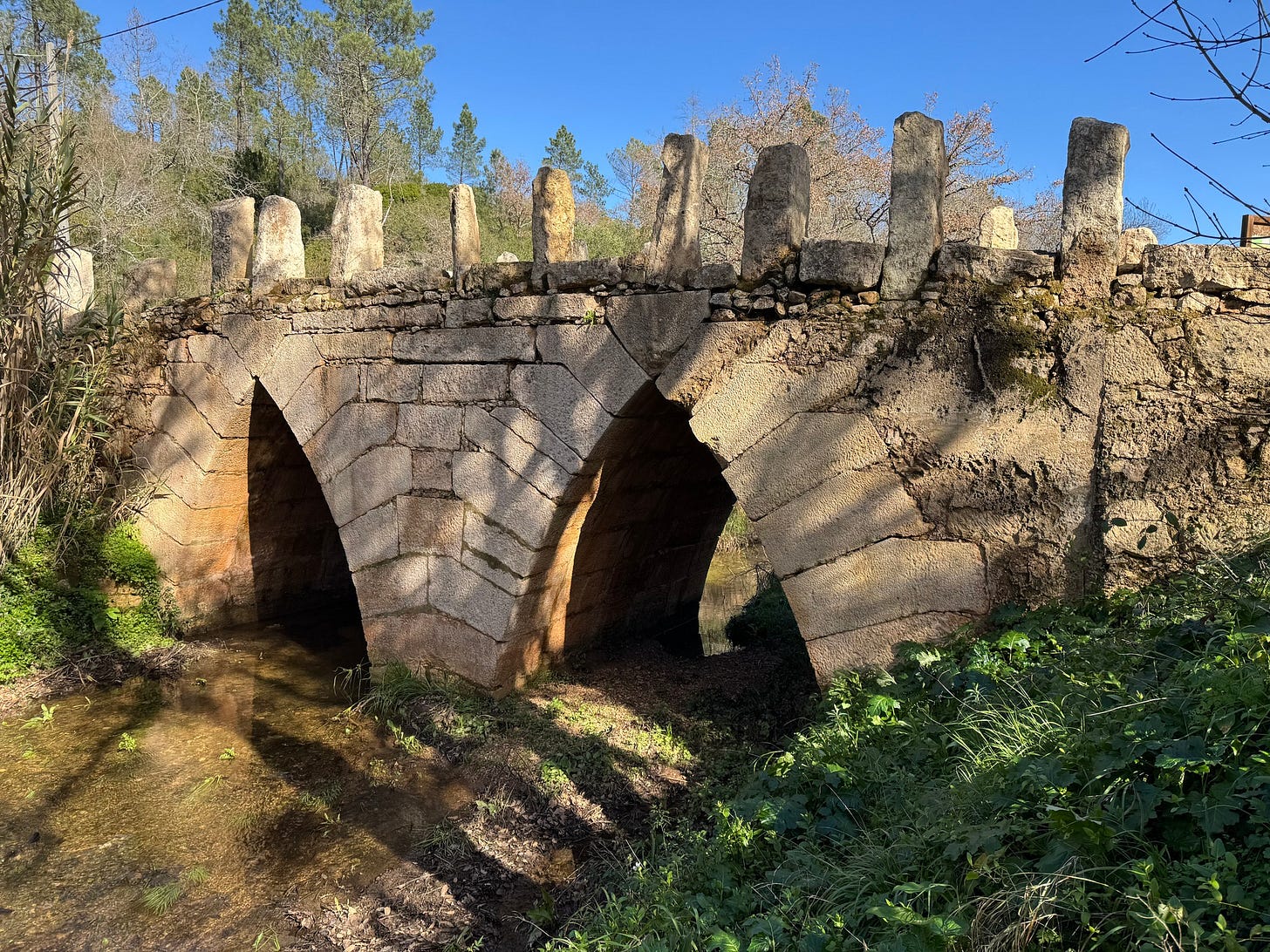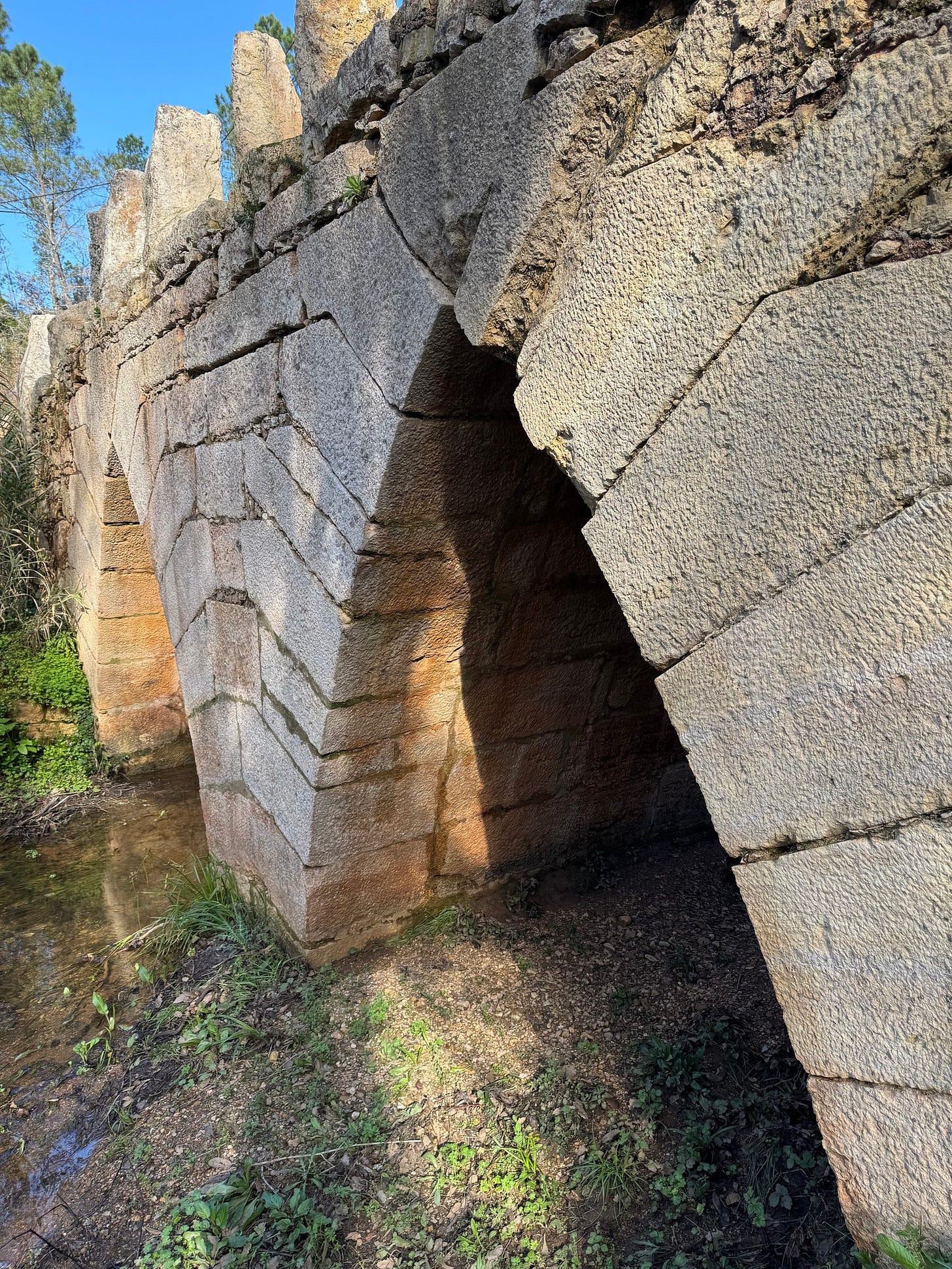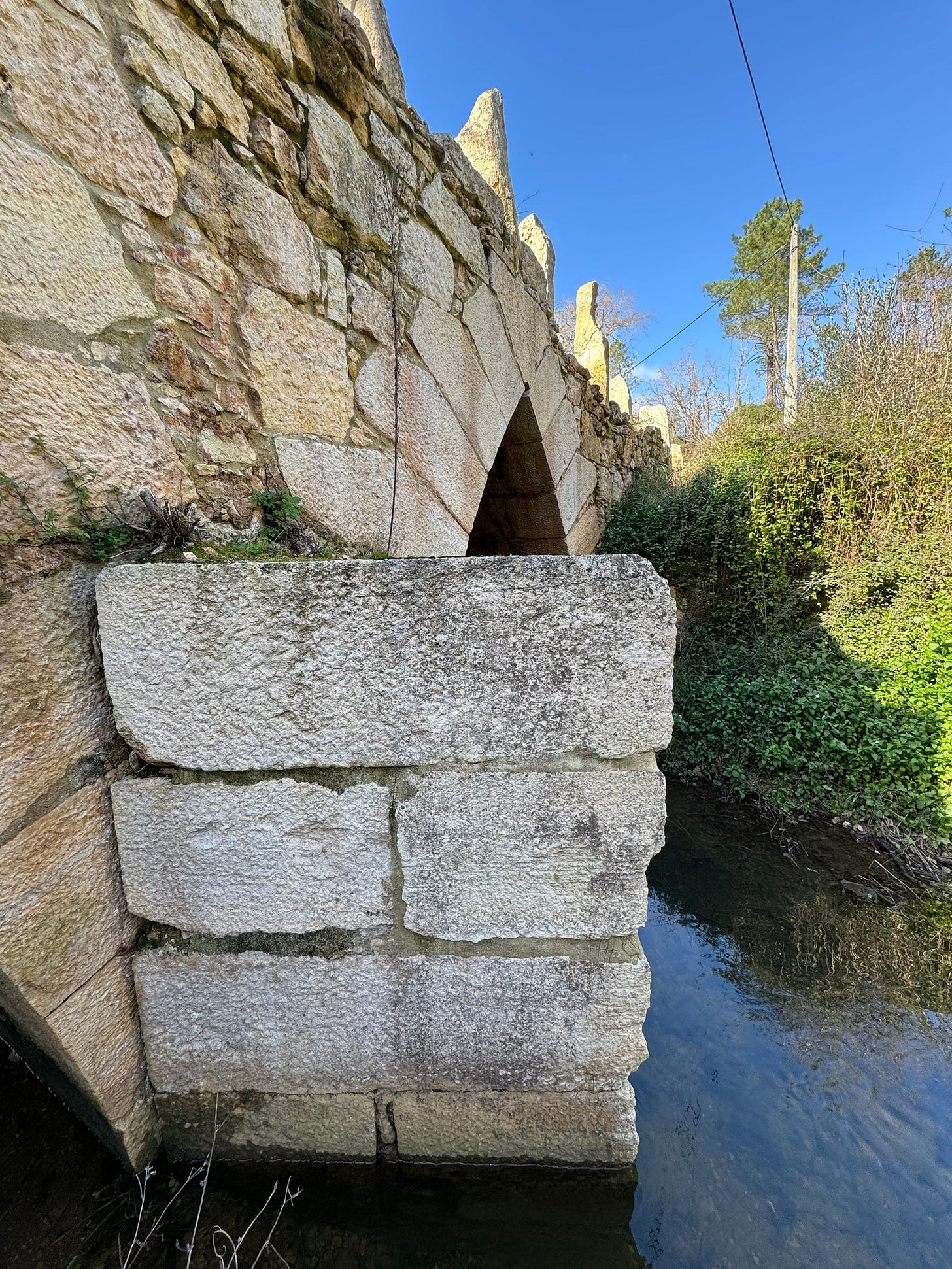Ponte de Peniche, Tomar, Portugal
A rough translation of the sign near this medieval bridge on a dirt road just outside of town:
“This bridge of unknown chronology, first referenced in 1470, allows the crossing of the Ribeira do Tripeiro stream, a tributary of the Nabão. It was originally with roughly stone and later rebuilt in limestone block masonry, this Gothic bridge has two ogival arches and side railings on the deck, where rectangular limestone blocks stand out. The solidity of the bridge is due to the arrangement of the voussoirs (the wedge shaped stones), worked blocks supported by the other blocks that make up the bridge's abutment and parapet, and solid key voussoirs where the arches end, being protected upstream by an angled "sea-cutter" extension.
Several archaeological sites have been identified around the bridge since prehistoric times. As such, the possibility cannot be ruled out that this human occupation was the proximate cause of the construction of this bridge, and thus its century.
The Peniche bridge was one of the bridges on the "new road", an alternative route to the "old road", which went from Tomar to Coimbra. Leaving Tomar towards the Peniche bridge, the road continued to Casais, passing through Soianda, Calvinos, towards Ceras. We don't know how old this road was when it was built, but it was already in use in the 15th century. Older was the aforementioned "old road" to Coimbra, which continued to be used during the Middle Ages, perhaps with a route parallel to the "new road", of Roman foundation, the route of via XVI, Scallabis-Sellium (Tomar)-Conimbriga, although there are still many doubts about its location. Roughly following the route of the E.N. 110/IC3, this road started in Tomar, passed by the Santo André gafaria (perhaps near the current Tomar bullring), continued to Alvito and probably went through Bacelos, Calçadas, Alviobeira and Ceras, where it met up with the "new road".”
I’m not sure why it’s called the Peniche bridge, since Peniche is a city on the coast about 120 km southwest of Tomar, but there you go. This “new” bridge was in place before anyone in Europe (besides the Vikings) knew there was a huge continent between them and India - if they didn’t think they’d fall off the edge first. I wonder how many Roman citizens may have crossed the original bridge here, and how many humble Portuguese farmers with their ox carts, and how many French and British soldiers during the Peninsular War, and, and, and… have crossed this one. And you can still drive a 21st Century motorized vehicle across it. Ah-MAZING!









That’s so cool!
In all things these days, I try to remember when I say "old" I'm not thinking clearly.